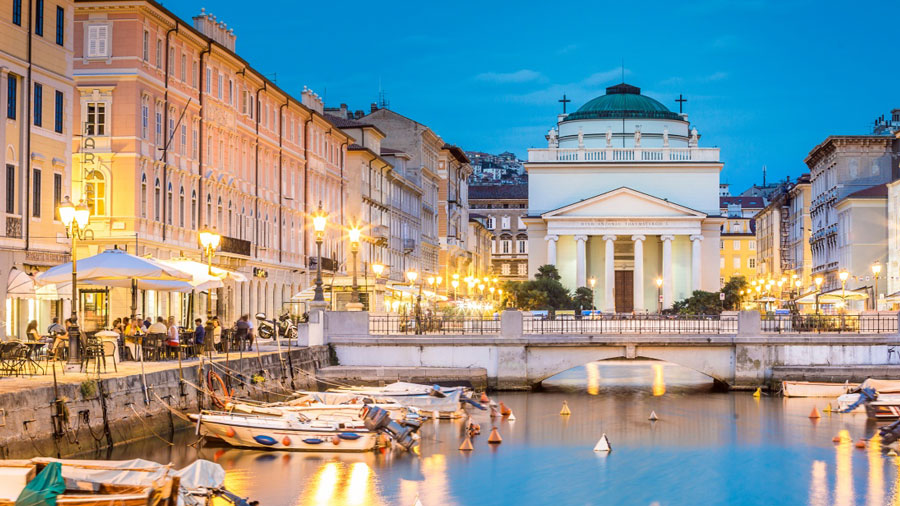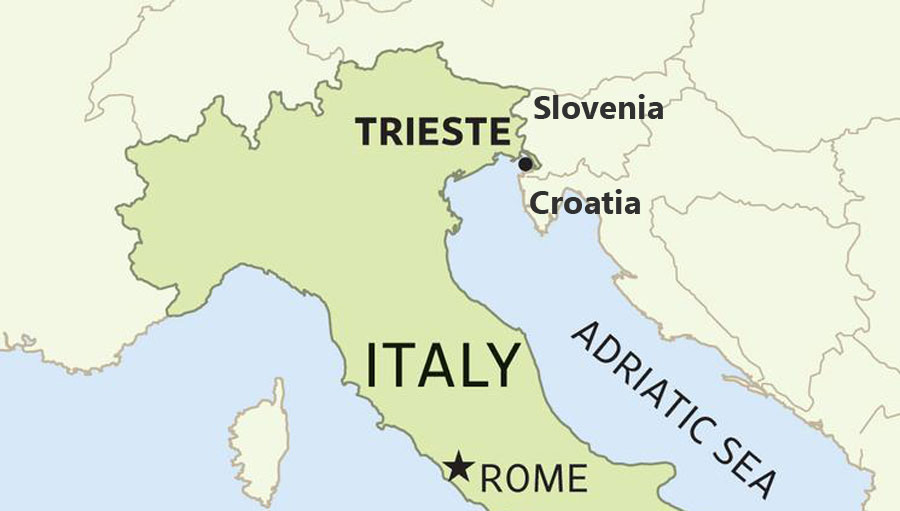The China–Italy Belt & Road MOU – Facing Increased Headwinds
Op/Ed by Andre Wheeler
Trieste As Balkans Or An Italian Connectivity Point Raises Old Issues
Whilst much was written about the significance of a G7 country signing up to China’s signature Belt Road Initiative, there appears to be little real progress. This was bound to be the case as both Italy and China have differing preferred options in terms of port developments. This was always going to be an issue that would test China’s commitment and resolve for greater transparency and community engagement. It appears that early predictions of Italy’s Trieste being the skeleton in the closet are beginning to bear some fruit.
By way of background, Italy sees the connection to the BRI rail network as an opportunity to redress its economic woes. Throughout the negotiation process Italy pushed the port of Genoa for development focus, whereas China expressed a preference in Trieste. A reason for the Italians pushing Genoa is the existing rail network behind its location, connecting into to the region’s hinterland. That rail network is developed and has been developed for the last 100 years as it supplies the Italian industrial heartlands of the Torino and Milano regions, Switzerland, Southern/Central Germany and even Eastern France. It is probable that the German, Swiss and French Governments are pushing Genoa in backroom dealings.
With the recently signed China / Swiss BRI MOU, the Genoa proposition appears to be highly credible. With the Swiss making important changes to its international cargo operations by moving to Vectron multisystem locomotives from Siemens, they have improved their capability to operate along the Rhine-Alpine corridor. As they are equipped with the European Train Control Systems, there is no need to change locomotives as cargo moves between Germany, Austria, Switzerland, Italy and the Netherlands. This will improve efficiency of freight transport through Europe as well as reduce transit times, making this trade corridor attractive to China.
On the other hand, Trieste port has been neglected for the last 100 years. Whilst it sits near the Baltic / Adriatic rail network, this connects to the hinterland of Austria, Czech Rep, Hungary, Slovakia and Slovenia. These developing countries are of strategic interest to China as it connects hinterland markets. Trieste becomes more strategic in terms of the BRI as Slovenia is developing Koper port and Croatia developing Rijeka. In the case of Rijeka, funds have been secured from the EU that offers an alternative to Chinese initiatives in the area. Furthermore, the Austrian and Hungarian rail networks can be supported by all three of these ports. Trieste lies just 45 km from the Slovenian capital of Ljubljana and has more connectivity common ground with the Balkans than it does mainland Italy.Chinese officials that are dealing with Trieste and Italy are beginning to express frustration at the lack of progress. They claim that there is a lack of transparency in terms of information disclosure by their Italian counterparts. Furthermore, the Trieste NGO are raising issues that they are being excluded from the discussion, claiming that they are being blocked by the Italian Government. The Trieste NGO go onto accuse Italy of failing to apply the International obligations it formally adheres to (in case of the Free Port, this is Annex 8 to the Treaty of Peace of 1947) is becoming a pressing issue. It could be argued that Italy has a vested interest in blocking Trieste, particularly when considering Article 34 of the peace Treaty that reads as follows:
“A free port shall be established in the Free Territory and shall be administered on the basis of the provisions of an international instrument drawn up by the Council of Foreign Ministers, approved by the Security Council, and annexed to the present Treaty (Annex VIII). The Government of the Free Territory shall enact all necessary legislation and take all necessary steps to give effect to the provisions of such instrument.”
Whether one sees the Trieste NGO as an irritating sideshow, the legal issues they now raise is gaining traction. As China has experienced in previous engagements, it is vital that local communities need to be fully engaged or they can do untold damage. One needs only look at community issues raised in the Kyauk Phyu region of Myanmar or Hambantota in Sri Lanka that delayed projects by many years. The Trieste community argues that profitable investment in Trieste, for both Triestines as well as for the International community, can only be possible if the Free Port provisions are applied. Not only do they see them as not being applied, they see it as being actively being violated. For example, by having a Port director who is an Italian citizen is currently forbidden by Article 18.3. Furthermore, by imposing, Italian taxation standards goes directly against articles 16.1 and 3.2, among others.The Trieste NGO are now making moves at a UN level, as it is the United Nations (UNSC resolution 16) that guarantees the application of International law over Trieste. They have made direct representation to members of the UN, including the USA, Germany and France to establish an International Commission, as provided by Article 21 of the Annex 8, that has been temporarily frozen. This can be reactivated at the request of any State party to the UN.
A possible way forward is for China to engage the UN to settle the Trieste Free Port and Territory dispute and resolve the political stalemate as to whether Trieste is Italian. It could also engage more effectively with the Trieste NGO to get traction in gaining community support for projects on the ground as well as use its position to influence the Italian government to follow suit.What is true though, is the Italian connection is proving to be problematic, with Italy playing a potentially zero-sum game with China. One would have thought they would have learnt earlier lessons when China used the Greek port of Piraeus to bypass Italian ports.
Andre Wheeler is a director of Wheeler Management Consulting and specializes in logistics related to the development of China’s Belt & Road Initiative. His recent book, “China’s Belt & Road Initiative: The Challenge For The Middle Kingdom Through A New Logistics Paradigm” can be found on Amazon. His views do not necessarily reflect those of the Publisher.
Silk Road Briefing will accept independent voices and opinion, and is the leading voice on China’s Belt & Road Initiative. If you have an article you’d like to submit please contact Adam Pitman, Managing Editor, at editor@asiabriefing.com
About Us
Silk Road Briefing is produced by Dezan Shira & Associates. The firm provides business intelligence, legal advisory, tax advisory and on-going legal, financial and business operational support to investors throughout China, India, ASEAN and Russia, and has 28 offices throughout the region. We also provide advice for Belt & Road project facilitation. To contact us please email silkroad@dezshira.com or visit us at www.dezshira.com







